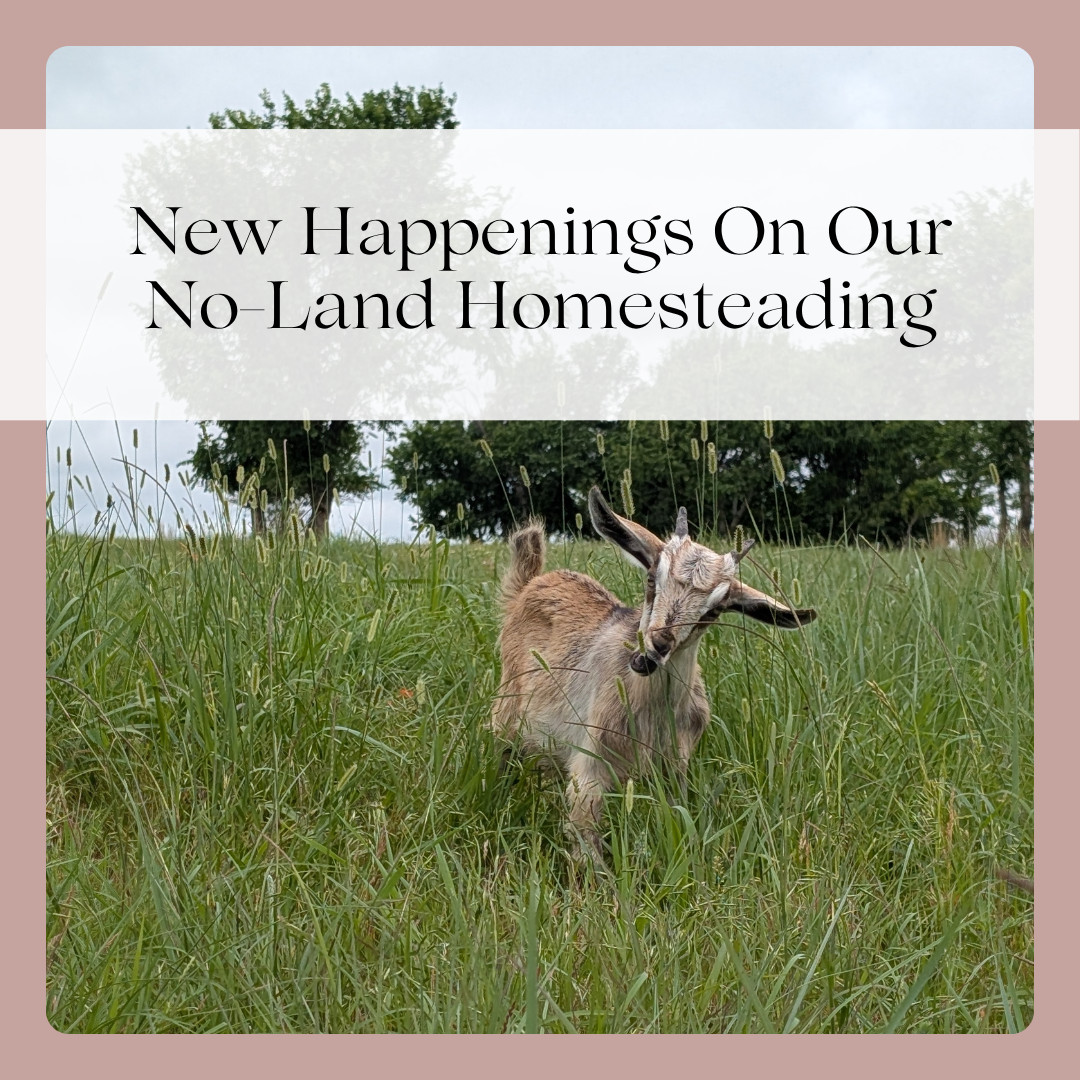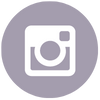
Homesteading can be deeply rewarding, but it’s not without heartbreak. This week, we faced one of the tougher moments every homesteader dreads—losing a kid (baby goat). Here’s what happened and what we’re learning through the process.
A Difficult Loss on the Homestead
Sadly, losing a baby animal is something every homesteader faces at some point. In our case, we suspect the mother wasn’t providing enough nutrition for one of her twins. Despite our efforts to intervene, it was too late by the time we returned with supplies.
Lessons in Monitoring and Nutrition
This loss taught us the importance of closely monitoring mother goats, especially with twins. This is something we have been trying to do, but it's easy to be misled and think all is well. Earlier in the week the kid seemed to be doing just fine, telling us it was some small sign we failed to recognize. We also realized we need to be better prepared, keeping supplies for bottle-feeding on hand in case of emergencies.
Challenges of Homesteading Without Land
One of the biggest hurdles we’re facing is living 20 minutes away from the land where we keep our animals. If we were closer, we might have caught the issue sooner and had a better chance of saving the kid. Homesteading without owning land adds unique challenges, but we’re finding ways to adapt.
Looking Ahead: Downsizing the Herd
Our next challenge is downsizing the herd. Without a truck, transporting animals to the processor or sale is tricky. We’re considering creative options, like taking a few at a time in our minivan. Yes, we’re doing this whole homesteading bit backwards, but we’re making it work.
Despite the struggles, we’re learning, growing, and taking steps toward our dream of owning land. Every challenge is a lesson, and every small victory is a step closer to the sustainable, self-sufficient life we envision.
🌸 From my homestead heart to yours —
If you’re walking this same journey of homemaking, decluttering, and creating a peaceful, faith-filled home, you’re not alone.
I’d love to share encouragement, simple living inspiration, and homestead wisdom with you — right to your inbox.
If you’re walking this same journey of homemaking, decluttering, and creating a peaceful, faith-filled home, you’re not alone.
I’d love to share encouragement, simple living inspiration, and homestead wisdom with you — right to your inbox.
– Amanda | The HomeGrown Mom 🌾

This is my 9th (I think) year of homeschool. I have now graduated my older 2 and my youngest is now a junior in high school. We have been a part of a homeschool co-op for most of the time we have homeschooled. When we first got started, we joined a co-op that was about an hour away. They had a lot to offer from extra curricular classes to academic classes. It was a great group of parents and they were very welcoming and helped us a lot as we were just getting started on our journey. However, we only stayed with them a short time due to the drive. Not long after that, a group of friends in my area were all homeschooling. We decided to get together and form our own co-op. It was a group of 6 moms with our kids. I don't remember how many kids we had total, but it was between 15-20. It was quite the group! We tried doing some of the core subjects, but it wasn't always that easy to get the job done with a bunch or rowdy boys, and I might add...stinky lol. One of the places we met was in a house (owned by the church next door and not being used)...to close pre-teen/teen boys up in a small bedroom just to have a quite place to teach a class. Let's just say it was less than pleasant.
Fast forward another year or 2...we found a co-op close by that was just starting to open up their doors to "outsiders". A couple of the moms from our group of 6 were going to try it out and since it was only a 20 minute drive, I decided I would give it a try too. I'm happy to say that I'm still with this co-op. I don't even know how many years its been. We have all made some great friends in this group. Moms, let me tell you...the comfort you have when you know the parents of the kids your kids are hanging out with is amazing! My kids were never (even in public school) allowed to go to a friend's house without us first knowing the parents. Being a part of a co-op, it's like a built-in bonus.
Now, let me bash one of those homeschool myths: Homeschool kids are unsocialized....ummm, really? My kids, as well as many others in our group, can carry on a conversation with people of all ages. I've seen it time and time again. We have all ages at our co-op, from babies all the way up to grandmas. The adults are respected, the kids know how to engage with others, the teenage boys are helpful and know how to open doors and help carry things. All of the kids pitch in on their designated days to help clean up when we are done. They learn responsibility. They grow up to be respectful young adults, willing to lend a helping hand.
Even with a great group, as most homeschool moms can relate, I'm always happy when it comes to the end of our co-op semester and we get a break. But, if I'm being honest, I also miss the time together. Realizing that I only have 3 more semesters with my youngest is a bit bittersweet. I enjoy the time with other moms and love watching the kids grow and learn. Most of my time with this co-op, I have taught the "littles" crafts. I love seeing all of their individuality. This year I'm also teaching a yearbook class with a few of the teen girls. This will be our 2nd time offering a yearbook. I did yearbook in high school and it was one of my favorite classes. So to be able to offer it to my kids has been great! It's always so fun to see it all come together and have memories to last a lifetime.
With that being said, it's time for our holiday break...don't mind me as I spend time with my family and also sneak in a little bit of time for some fun crafts of my own or maybe even working on our homeschool yearbook.
Enjoy this time with your loved ones!
🌸 From my homestead heart to yours —
If you’re walking this same journey of homemaking, decluttering, and creating a peaceful, faith-filled home, you’re not alone.
I’d love to share encouragement, simple living inspiration, and homestead wisdom with you — right to your inbox.
If you’re walking this same journey of homemaking, decluttering, and creating a peaceful, faith-filled home, you’re not alone.
I’d love to share encouragement, simple living inspiration, and homestead wisdom with you — right to your inbox.
– Amanda | The HomeGrown Mom 🌾

After a bit of trial and error trying to keep the goats where they belong, I'm happy to say that they are now happily staying put where they are supposed to be. We fixed a few points in the fencing that needed more reinforcement, adjusted the electric fencing, and made sure they had plenty of feed. No more wandering goats!
Last night when we went to check on the goats and our guardian pups who were just moved beside the goats (more on that later), we noticed that one of the expecting mommas had given birth to twins. We knew some of the goats were expecting when we moved them a few weeks ago. But we weren't quite expecting them just yet.

When it came time to feed the goats, my son herded the goats to the feeding station, but the new momma wasn't ready to make the treck with her babies. They just weren't able to keep up with the herd. So my other son and I headed over and carried the babies, making sure momma saw them in our arms and knew they were safe. She then followed us to the feeding station. Since she was late getting there, we gave her a little extra feed to ensure that she had enough.
My husband then walked the land to make sure all of the after birth had been disposed of. Good momma goats will take care of it, keeping the area clean and safe. But not all mommas know to do this so we had to be sure. If it isn't all cleaned up, it's an invitation to predators that we don't want around our goats. Thankfully, our momma had taken care of it all.

Once we made sure all was well with the goats, we headed home. This morning my son checked the goats and fed them, but didn't see the new babies. The momma had come to feed so my son was concerned about the babies. I headed over to help with this new game of hide-and-goat-seek. Thankfully he found them safely hidden away. Once again, momma took care of things and made sure her babies would be safe while she headed over to the feed station.
So fare there are no more babies, but we are keeping a close eye on 3 more mommas-to-be. This goat adventure keeps us busy! But seeing those newborn healthy babies makes it all worth it!
🌸 From my homestead heart to yours —
If you’re walking this same journey of homemaking, decluttering, and creating a peaceful, faith-filled home, you’re not alone.
I’d love to share encouragement, simple living inspiration, and homestead wisdom with you — right to your inbox.
If you’re walking this same journey of homemaking, decluttering, and creating a peaceful, faith-filled home, you’re not alone.
I’d love to share encouragement, simple living inspiration, and homestead wisdom with you — right to your inbox.
– Amanda | The HomeGrown Mom 🌾

If you have never heard of a Runza before, let me just tell you...they are sooo good! I grew up in Nebraska (well, at least 6th-12 grades, then back for college) and there is a food chain called Runza. Talk about tasty! Since I haven't been to Nebraska in probably 18 years, I now make my own runzas at home. So good!! Even my picky eaters like them. I call that a win!! Of course, they are best served with fries. I choose to make them fresh and bake them in the oven. Yummy!
Now, let's get to the recipe!
Homemade Runza
Ingredients
Dough
Dough
- 4 1/ 2 cups all-purpose flour
- 1/4 cup sugar
- 2 pkgs (1/4 oz) yeast (or 4 1/2 tsp)
- 1 tsp salt (I like Himalayan)
- 3/4 cup milk
- 1/2 cup butter
- 2 eggs
Filling - 2 lbs ground beef
- 1 small onion
- 4 cups cabbage, chopped
- 1 tsp garlic powder
- 1 tsp dried thyme
- 2 tsp dried rosemary
- salt & pepper to taste
Instructions:
Dough
- Place 1 1/2 cups flour, sugar, yeast, and salt into large mixing bowl, fitted with a dough hook.
- In small saucepan, heat milk, water, and butter to 120-130 degrees F, over medium heat.
- Pour heated wet ingredients into flour mixture and mix slightly before adding beaten eggs.
- Continue mixing while adding remaining flour, 1 cup at a time. Mix/kneed until dough comes together and is smooth and elastic.
- Place dough in greased bowl, cover and let rise in a warm place for about 1 hour.
Filling
- While dough is rising, cook beef and onion over medium-high heat until meat is no longer pink. Drain if needed.
- Stir in seasonings and chopped cabbage. Stir gently and cook until cabbage is cooked (about 2-3 min).
- Remove from heat and let cool a little while the dough finishes rising.
Making Runzas
- Preheat oven to 350 degrees F.
- Punch down dough and divide into 12 equal portions.
- Roll out each piece of dough into a rectangle.
- Place 1/2 cup of filling in center of each piece (you can add a little more for fuller runzas, I like to have some left over for another meal so I only do 1/2 cup).
- Add cheese if desired (see note below).
- Fold over dough to encase filling and seal the edges.
- Place on greased baking sheet (edges can touch but they cook a little better with a finger's width of space between them).
- Back at 350 degrees F for 18-20 minutes or until golden brown.
Note:
I like to use the leftover filling to make another half batch of runzas or to serve over rice for another meal.
These freeze well and are easy to thaw in the fridge and reheat.
Can add a slice of mozzarella cheese if you want to add a little cheesyness. Yum!
🌸 From my homestead heart to yours —
If you’re walking this same journey of homemaking, decluttering, and creating a peaceful, faith-filled home, you’re not alone.
I’d love to share encouragement, simple living inspiration, and homestead wisdom with you — right to your inbox.
If you’re walking this same journey of homemaking, decluttering, and creating a peaceful, faith-filled home, you’re not alone.
I’d love to share encouragement, simple living inspiration, and homestead wisdom with you — right to your inbox.
– Amanda | The HomeGrown Mom 🌾

Once again, our goats got out. My guys went to check on them yesterday afternoon when they got off work...only to not be able to find them anywhere. They spent about 2 hours looking for them. They made it almost home (about a 20 minute drive) only to find out that a neighbor on the land next to where we have the goats spotted them. We quickly headed back out to look for them...for almost an hour before it just got too dark to see anything, even with a flashlight. Thankfully the neighbor said it would be ok to leave them overnight.
So, first thing this morning, we got up and headed over once we had daylight. Two of my guys were with me, which is good since the goats don't really know me yet. We searched for almost an hour before finding them. They were back on the right land, but not near at the right area. So we herded them back, which took another 20 minutes. They were surprisingly easy to herd. It took a little bit to get them to go back into the fenced area, but once a couple of them found their way, the others quickly followed.
Now, if we could only figure out how they keep getting out. We did some adjustments on the electric fence and hopefully they will be staying put now. After all, they DO have a nice 20 acres to roam, lots of trees and vegetation, and 2 ponds. They really don't need to go anywhere!
Moral of the story: We need to learn to be satisfied with what we have and be happy with what we have been given.
Don't be a goat, always looking for something better.
Next up in our goat adventures: building shelters and making an area to help introduce our livestock pups to them.
🌸 From my homestead heart to yours —
If you’re walking this same journey of homemaking, decluttering, and creating a peaceful, faith-filled home, you’re not alone.
I’d love to share encouragement, simple living inspiration, and homestead wisdom with you — right to your inbox.
If you’re walking this same journey of homemaking, decluttering, and creating a peaceful, faith-filled home, you’re not alone.
I’d love to share encouragement, simple living inspiration, and homestead wisdom with you — right to your inbox.
– Amanda | The HomeGrown Mom 🌾


















